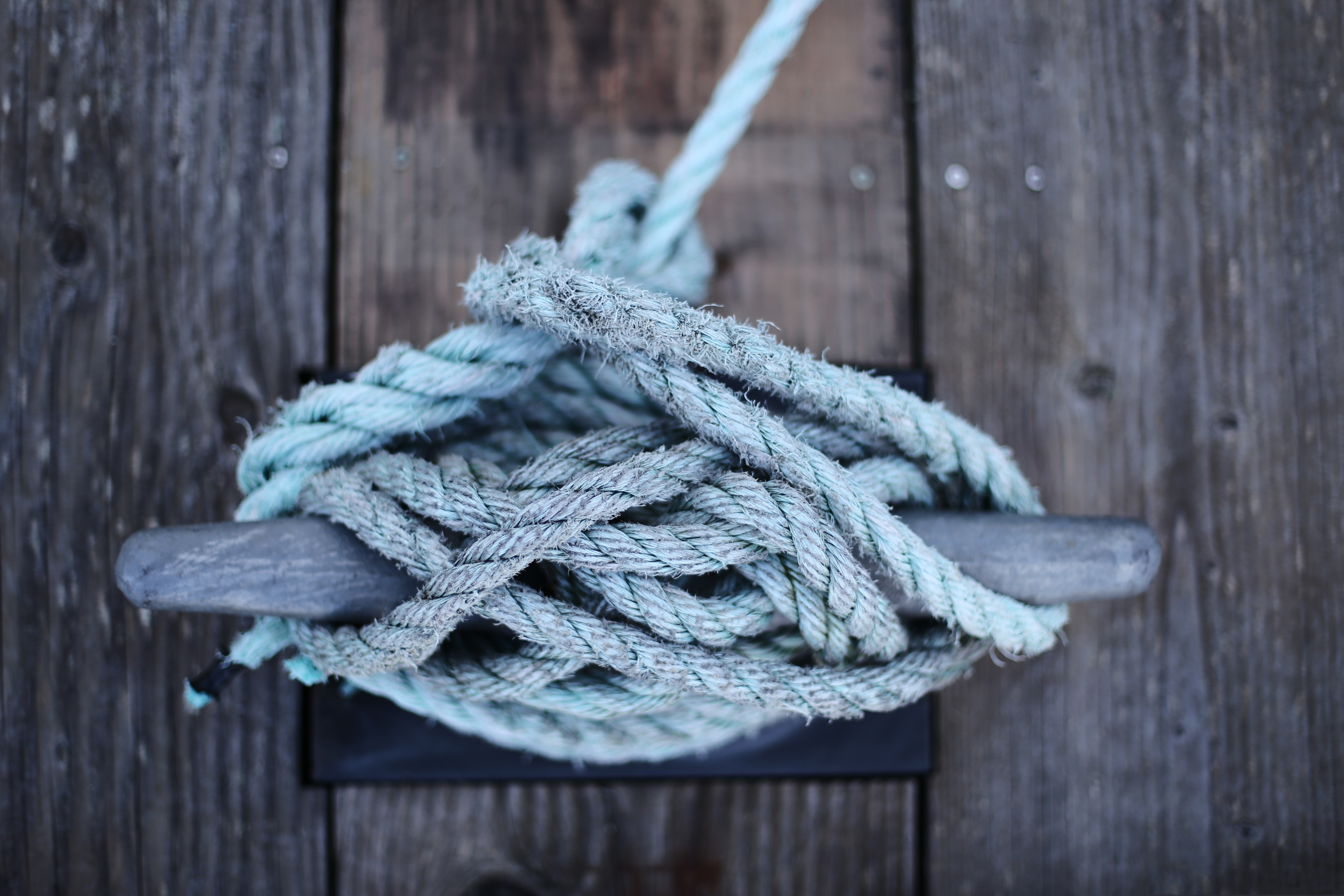
How to Pick the Right Dock Lines
Dock lines are designed to secure your boat to a dock, slip, mooring, or another boat. There are different lines for both temporary and semi-permanent purposes, depending on their intended use.
Regardless, your lines need to be strong and flexible, allowing for your boat to remain in place, while absorbing shock loads as well. They should also be resistant to abrasion, UV rays, and rot.
Overall, there are many factors to consider when it comes to dock lines. Check out our guide to their material and construction, sizing, durability, and more.
Material and Construction
Preferred Material
Nylon lines are the ideal choice for boaters.
Nylon is a versatile material – it is both strong and durable, with an impressive ability to stretch and absorb shock loads when heavy winds and waves cause your boat to rise and fall. When using a less elastic line, those shock loads can cause significant damage to your boat. Even worse, the line could snap and set your boat free.
Additionally, nylon is highly resistant to rot and mildew, as well as sun exposure. On the other hand, polypropylene degrades fairly quickly from constant exposure to UV rays.
Nylon rope will avoid these complications. They have an excellent strength-to-absorption ratio and the stretch capabilities necessary to withstand adverse weather conditions.
It’s an extremely durable material and can even last longer than most natural fibers. It’s the best choice for strength, handling, and overall safety.
Construction Options
Dock lines commonly come in three weave types – three-strand, braided, and double braided.
- Three-Strand Nylon: a simple 3-strand, twisted line
- Abrasion-resistant
- Knobby finish
- Good stretch
- Easy to splice
- Affordable
- Braided Nylon: a 3-strand, braided line
- Strong
- Abrasion-resistant
- Easy on hands
- Double Braided Nylon: both the core and covering are braided, not twisted
- Very strong
- Controlled elongation
- Easy to handle
- Abrasion-resistant
Their differences are subtle, and each would prove to be an adequate dock line. Still, you should consider your specific docking situation and the perils you may face.
Transient Lines Versus Permanent Lines
Transient lines, i.e., non-permanent lines, are meant to be kept on board when you tie up elsewhere.
They have a loop on one end to fasten to a cleat. These types of lines will not have loops on both ends, as they will need to be drawn to various sizes, depending on the docking situation at hand. The spliced eye passes around a cleat or piling, and the other end is adjusted on your boat.
Permanent lines will have loops on either end, as they are not meant to leave the dock. Usually, these lines will have leather or rubber chafe gear where the lines pass through the chocks. If your dock has rings, the lines will be protected from chafe with eye splices and shackles. Rather, if the dock has cleats, eye splices and short length chains are better.
If you wind up splicing your own lines, get the three-strand twisted lines over the braided options. They are much easier to splice.
Dock Line Colors
You can get dock lines in a variety of colors. There is no correlation between a specific type of dock line and its color. The color can be chosen based on preference, rather than functionality.
Types of Dock Lines
To keep your boat securely in place, it will need a few different kinds of dock lines – bow, stern, spring, and breast. Each works together, stretching and relaxing with the waves.
- Bow and Stern Lines
These lines will run from either end of the boat to the dock. It’s important to keep these lines longer, rather than on the shorter side, as mooring cleats and pilings vary from location to location.
Bow and stern lines are meant to keep the boat from moving side-to-side, as well as fore and aft. To do this, they are usually placed at an angle.
- Longer Spring Lines
Spring lines will run forward from the stern and aft to the bow. They are designed to keep the boat from moving forward and backward.
Your boat should have at least two spring lines, though preferably more to keep it safely and securely in place.
- Breast Lines
These lines run from the bow or stern directly to the dock. They’re meant to temporarily hold the boat near the dock. Once fully boarded, they should be removed or slackened if the boat is left unattended. It’s best to let the other lines keep the boat secure.
» MORE: Floating or Fixed Docks: Boat Insurance Pro Tip
Sizing
Your dock lines need to be strong enough to hold the boat steady and resist chafe, without being so bulky and heavy that it reduces their shock-absorbing capabilities.
Getting dock lines with the correct diameter will help with this. Essentially, you want 1/8’’ of line diameter for every 9’ of boat length. You then want to incorporate external factors, like waves, wind, and currents.
Here’s a general idea when it comes to boat size and line diameter.
- Boat Length = 27’, Line Diameter = 3/8’’
- Boat Length = 28’-31’, Line Diameter = 7/16’’
- Boat Length = 32’-36’, Line Diameter = 1/2’’
- Boat Length = 37’-45’, Line Diameter = 5/8’’
- Boat Length = 46’-54’, Line Diameter = 3/4’’
- Boat Length = 55’-63’, Line Diameter = 7/8’’
- Boat Length = 64’-72’, Line Diameter = 1’’
Severe Weather & Sizing
In rougher conditions, some boaters use dock lines with a bigger diameter.It’s important to note that this will make the lines stronger but will decrease overall elasticity. This may cause damage when big waves are present. It’s better to double up on lines instead.
